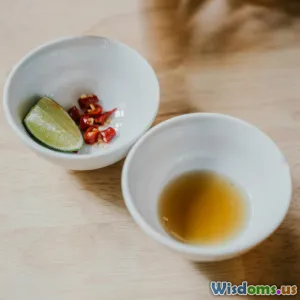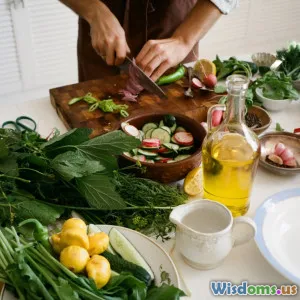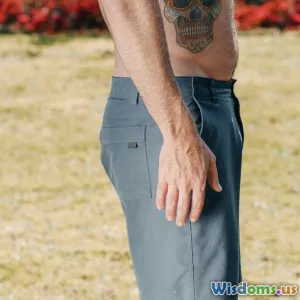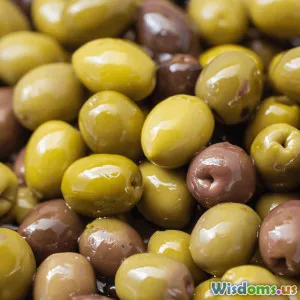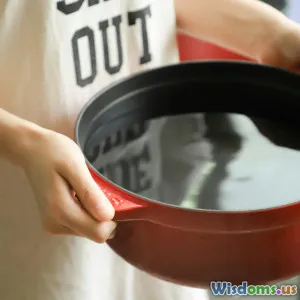
Is Sous Vide Cooking Worth the Investment for Home Cooks
9 min read Explore the benefits and drawbacks of sous vide cooking to decide if it's a smart investment for home chefs. (0 Reviews)
Is Sous Vide Cooking Worth the Investment for Home Cooks?
When it comes to cooking at home, innovation never stops. Among recent culinary breakthroughs, sous vide cooking has surged in popularity — promising perfectly cooked meals with minimal effort and maximum flavor. But does investing in sous vide equipment truly pay off for the average home cook? Or is it just a fancy gadget better left to professional chefs and foodies?
This article delves into everything sous vide, uncovering what makes it special, examining the pros and cons, and helping you decide if it's worth joining the sous vide revolution.
What Is Sous Vide Cooking?
Originating from French culinary traditions, "sous vide" means "under vacuum." It’s a cooking technique involving sealing food in airtight plastic bags and cooking it in precisely temperature-controlled water.
Unlike traditional cooking methods — frying, roasting, or grilling — sous vide keeps food at a stable temperature to ensure perfect doneness from edge to center. For example, if you want a flawless medium-rare steak, you might set the water bath to exactly 130°F (54.4°C) and leave the steak to cook in the water for 1-2 hours or longer, depending on thickness.
Chef Thomas Keller and other culinary experts popularized sous vide, later adapted for home use as affordable precision cookers entered the market.
Precision and Consistency: Why Sous Vide Stands Out
The defining advantage of sous vide is its precision control over cooking temperature. This ensures food is perfectly cooked to your desired level, each time. No guesswork, no overcooked edges, and no undercooked centers.
Real-World Result: Perfect Protein Every Time
Take chicken breasts, notoriously easy to dry out on the stove. Cooking sous vide at 145°F (62.8°C) for about an hour results in tender, juicy chicken consistently — a feat difficult to achieve with pan-frying.
Professional chefs rely on sous vide precisely because of that reliability. For home cooks, this means reduced food waste and more confidence that meals will turn out well — a big plus especially when cooking for guests.
Advantages in Texture and Flavor
Because vacuum-sealed bags trap all juices and aromas, the technique also intensifies flavors and improves texture. Vegetables keep vibrant colors and crispness, fish boils gently and stays flaky without falling apart.
These quality improvements can elevate everyday meals without needing elaborate recipes or high-level culinary skills.
The Cost Breakdown: Is Sous Vide an Affordable Investment?
Equipment Costs
Entry-level sous vide immersion circulators typically cost between $70 and $200. Top-tier models with more features and higher precision can go up to $400.
You’ll also need vacuum sealing supplies — a vacuum sealer ($50-$100) or heavy-duty resealable bags (less costly but less effective for extended cooking). Some home cooks use alternative sealing methods with zip-lock bags and water displacement, lowering initial investment.
Energy and Time
Sous vide generally cooks food slower than traditional methods — steaks might take 1-4 hours, tougher cuts 12+ hours. The immersion circulator runs quietly but continuously.
Energy cost tends to be modest since sous vide operates with water at comparatively low, stable temperatures. A full meal cooked sous vide still often consumes less electricity than oven roasting.
Is It Worth It?
For enthusiasts who eat protein-heavy meals frequently or love precision cooking, the benefits can justify the price. Casual cooks who grill or pan-fry only occasionally might find the upfront spend harder to justify.
Versatility and Ease: What Home Cooks Should Know
Multi-Use Kitchen Tool
Sous vide equipment doubles as a slow cooker and yogurt maker — some brands include presets for diverse foods like eggs, veggies, and desserts, adding value.
Example: Foods tough to get right such as ribeye steaks, pork chops, carrots, or custards can all benefit from sous vide’s controlled environment.
Step-by-Step Preparation
Basic steps are straightforward:
- Season food and place it in a vacuum-sealed or zip-lock bag.
- Set immersion circulator temperature and time.
- Submerge bagged food in water and cook.
- Finish with a quick sear or broil for texture if desired.
This repeatable process means less stress about overcooking or timing multiple dishes. Many users report increased confidence and better mealtime outcomes.
Common Misconceptions and Practical Concerns
Plastic and Health Concerns
Some worry about cooking in plastic bags. It's wise to choose BPA-free, food-safe vacuum bags or silicone reusable bags. Research from the FDA and independent labs shows most sous vide bags are safe for recommended use.
The Final Sear: Not Truly "Hands-Off"
Sous vide doesn’t replace all cooking — most proteins benefit from a finishing sear in a hot pan or on a grill for flavor and texture.
This additional step only takes minutes but does require kitchen gear and some technique.
Limited Instant Gratification
Because sous vide emphasizes patience and timing, it may not fit last-minute or fast dinner plans.
That said, many sous vide fans batch cook meals or sous vide ingredients in advance to fit busy schedules.
What Do Experts and Home Cooks Say?
Chef Amanda Cohen, acclaimed NYC restaurateur, praises sous vide for consistency and flavor but cautions it’s best paired with good ingredients and finishing details.
Home cooking forums bustle with testimonials like this: “My chicken breasts never dry out anymore, and the ribeye literally melts — so worth the investment!”
On the flip side, some users report initial tech learning curves and disappointment due to unrealistic expectations.
Conclusion: Is Sous Vide Worth the Investment for You?
Ultimately, sous vide represents a blend of culinary precision, convenience, and improved food quality, making it a powerful tool for many home cooks.
If you love experimenting in the kitchen, seek flawless, repeatable results, or cook meats and veggies often, sous vide could dramatically upgrade your cooking.
For cost-sensitive or occasional cooks who prize quick meals and minimal gadgets, it might be an unnecessary luxury.
Consider your cooking style, willingness to learn, and meal preferences before investing. With the right mindset, sous vide is more than a gimmick — it’s a transformative way to bring professional-grade cooking into your home.
Ready to Dive Deeper?
For a hands-on experience, try borrowing or renting an entry-level sous vide cooker and experiment with simple recipes like chicken breast or eggs. The firsthand results may be the best reason to invest or skip this culinary marvel.
Remember, cooking is as personal as taste — the best technique is one that fits your kitchen and lifestyle, yielding delicious food and joy.
Happy cooking!
Rate the Post
User Reviews
Popular Posts
















